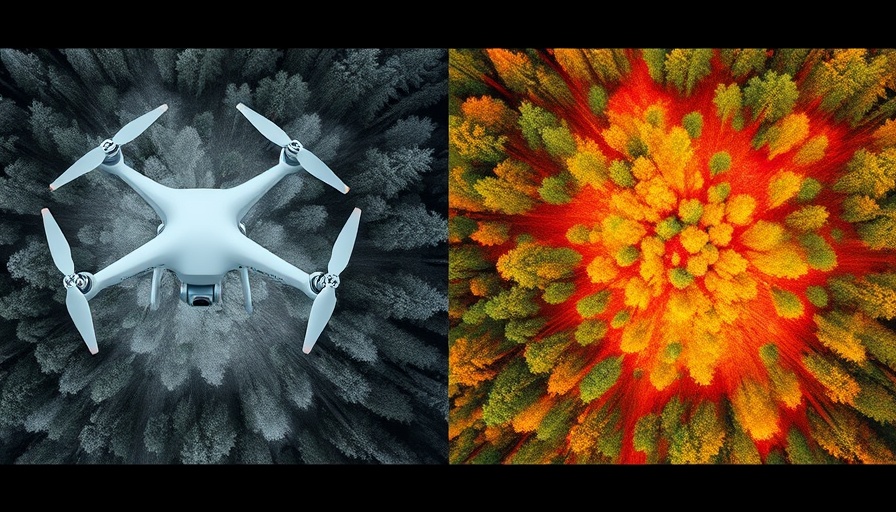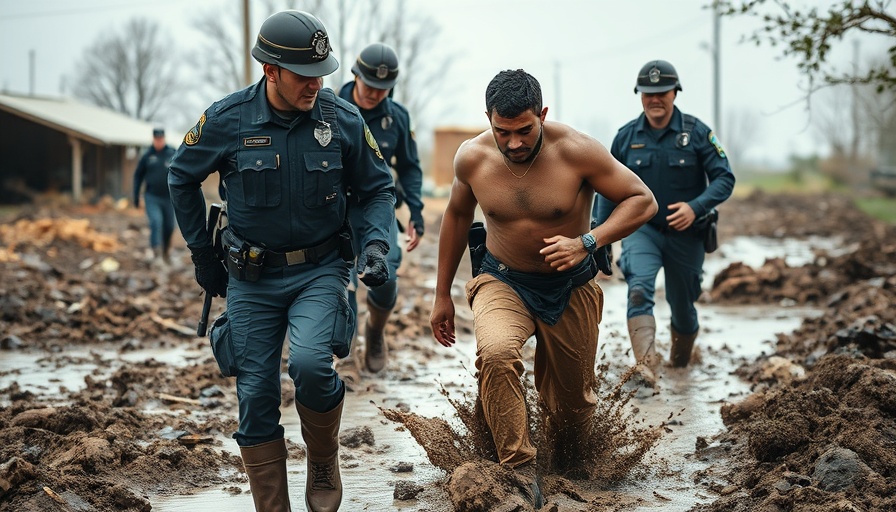
The Power of Drones in Search and Rescue Operations
In a heartwarming yet alarming episode in Mason County, Michigan, the use of drone technology took center stage during a frantic search for a missing woman. Nancy Bloomquist, 74, found herself lost and injured after her vehicle caught fire, leading to a desperate situation where she sought shelter under a tree in a heavily wooded area. After three days, first responders leveraged cutting-edge drone technology to locate her, demonstrating the invaluable role that modern tech plays in enhancing public safety.
What Happened: A Case Study of Lost and Found
Bloomquist’s ordeal began on April 3, when she became disoriented while driving home from Little River Casino in Manistee. Her vehicle malfunctioned, ignited, and she fled into the surrounding woods. Left without her cell phone and unable to find her way back, she remained hidden from view until the search commenced. Just five hours into the search, the deployment of a drone brought a successful conclusion to this three-day saga. The rescue team found her 150 yards from the vehicle, signaling the triumph of technology over adversity.
Strategic Importance of Drone Utilization in Law Enforcement
This incident underscores the critical necessity for police departments to incorporate drone technology in their operations. Drones provide aerial views of expansive and challenging terrains that traditional ground searches struggle to navigate, offering significant advantages such as increased search efficiency and safety for rescue teams. As police recruitment strategies evolve, equipping officers with drone-acquisition training and fostering partnerships with drone manufacturers could yield a rapid advancement in response capabilities.
Community Engagement: Building Trust Through Technology
The successful recovery of Nancy Bloomquist is not just a victory for technology; it's also a pivotal moment for community relations in law enforcement. Given that the police forces involved included regional departments such as the Norton Shores Police and local fire volunteers, the collaboration exemplifies how technology can join hands with community efforts. This fields a beneficial narrative, showcasing law enforcement not merely as enforcers but as community protectors utilizing the latest to keep citizens safe.
Policy Implications: Training and Accountability
Though drones boast remarkable efficiency, their integration into law enforcement also necessitates firm policies. Procedural training on drone use must accompany their deployment to ensure accountability and transparency in operations. Law enforcement agencies should examine current law enforcement policies, considering updates that govern drone operations and their ethical implications within searches for missing persons and criminal investigations.
Future of Public Safety: Drone Technology Trends
As technology continues to advance, we can expect to see innovations that further intertwine drone usage with law enforcement operations. Ongoing developments in AI-enhanced drones capable of obstacle navigation and real-time data analysis could reshape various aspects of police operations, from patrol enhancements to community policing initiatives. Staying abreast of these trends can help police departments create comprehensive public safety strategies.
This intersection of drone technology and public safety highlights the importance for police departments to actively evaluate their technological capabilities and training methods. As such, there is an urgent need for advanced training programs to prepare police officers for the evolving landscape of law enforcement.
Residents can play an active role in enhancing their community's safety by staying informed about local police initiatives and advocating for improved tech-based tools like drones. The more involved citizens are, the stronger trust can blossom between officers and the communities they serve.
 Add Row
Add Row  Add
Add 

 Add Element
Add Element  Add Row
Add Row 




Write A Comment